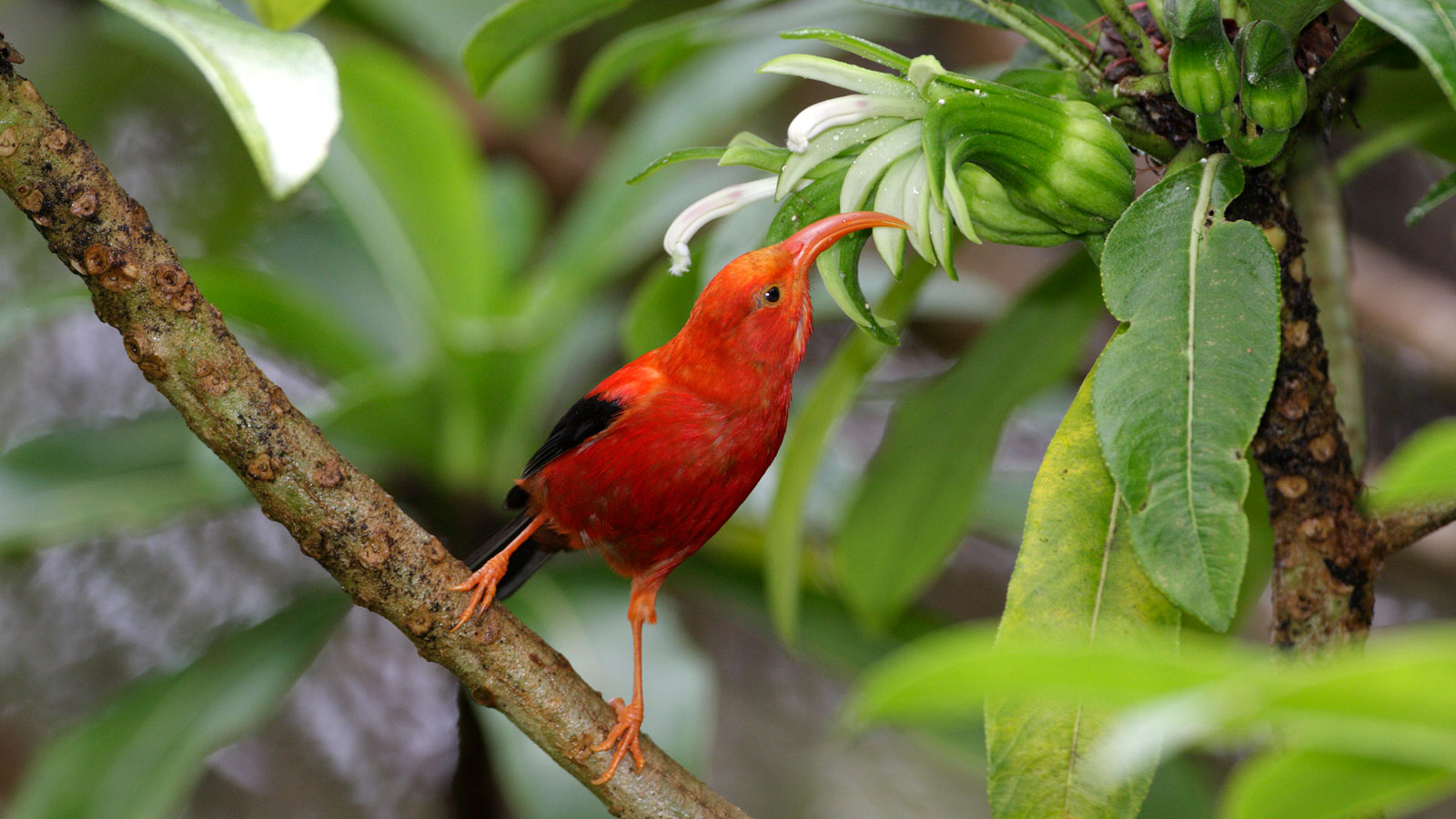A small red bird called the ‘i’iwi is a symbol of the Hawaiian islands. It used to be common, but now this distinctive little bird is in danger of extinction.
Eben Paxton of the USGS Pacific Island Ecosystems Research Center explains that the i’iwi evolved in isolation. So these native Hawaiian birds never developed immunity to many diseases that were common elsewhere.
“And so they’re very vulnerable,” he says.
Avian malaria, which was brought to Hawaii in the 1800s, poses an especially grave threat. The disease kills almost all the ‘i’iwi that it infects.
It’s spread by mosquitoes, which are most prevalent in low-lying areas. So ‘i’iwis now live only at higher elevations, where it’s historically been too cool for mosquitoes.
“But … with global warming and climate change, the temperatures are increasing at those higher elevations,” Paxton says. “And that provides more opportunity for these mosquitoes to breed at higher elevations, which is allowing the disease to move into these areas that historically had been disease-free.”
He says researchers are working to protect ‘i’iwi habitat and control mosquitos. But without help, this iconic bird could be on the verge of extinction this century.
Reporting credit: Sarah Kennedy/ChavoBart Digital Media
Source link


